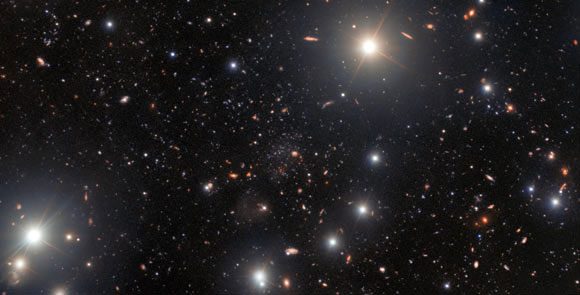Scientists have recently identified Pegasus V – a ghost galaxy that is a rare fossil from the dawn of the universe, located near the Andromeda Galaxy.
“Ghost galaxy” is a nickname in the astronomical community referring to extremely faint and nearly transparent galaxies, resembling a ghost. The dwarf galaxy Pegasus V, situated in the constellation Pegasus, is an example.
According to Sci-News, Pegasus V was discovered when a team of scientists led by Dr. Michelle Collins from the University of Surrey in the UK analyzed data collected by the Gemini Multi-Object Spectrograph (GMOS), installed on the Gemini North telescope located in Hawaii at the International Gemini Observatory.

Ghost Galaxy Pegasus V – (Image: International Gemini Observatory / NOIRLab)
This “ghost galaxy” is situated in the outskirts of the luminous halo of the giant Andromeda Galaxy. Andromeda is the “monster” neighbor of the Milky Way, the galaxy that contains Earth, and it is predicted to collide and merge with the Milky Way, potentially ejecting our planet from the “habitable zone.”
Pegasus V appears to be extremely deficient in elements heavier than those found in similar dwarf galaxies, suggesting that it is likely a “fossil” of the universe, belonging to the class of the first galaxies that formed and may have ceased star formation by now. This explains why it appears as a faint ghost rather than a bright, luminous galaxy disk.
The discovery of this “ghost galaxy” will significantly contribute to the dataset regarding the early universe, helping to validate long-standing theories and further our understanding of the universe’s mysterious “dark matter.” The greatest challenge in searching for similar galaxies is that they are too faint and have too few remaining bright stars to be detected.
The research has been approved and will be published in the next issue of the scientific journal Monthly Notices of the Royal Astronomical Society.





















































